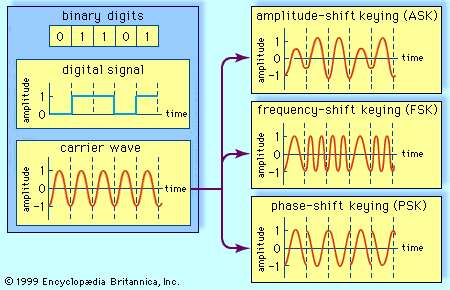AMATEUR RADIO DIGITAL MODES
Digital modes are a means of transmitting sound, text or other information using a set number of discrete frequency or phase shifts. This is achieved via ham radio using personal computers, soundcards and software. The bandwidth is usually narrower than voice and digital modes work well with low power. Both text and images can be converted to digital format and sent as audio via the soundcard to the radio for transmission.
Digital ham radio has grown much in popularity recently, but some modes have been around for quite a while, for example RTTY, originally used with teletype machines. OK, what is available? FL-DIGI is an excellent piece of software which is undergoing constant development. It features a long list of modes from the older “legacy” modes such as RTTY to the more modern modes such as Olivia and Thor. These last two modes work very well in noisy environments as they feature built-in error correction.
Fldigi is easy to use. Once the computer, sound card and radio are connected, it is no harder than typing up an email message. Fldigi also has a range of other associated programs available that work with it.

Images can be transmitted by some Fldigi modes but the file sizes are somewhat limited. What else? Well, we still have the older analogue program MMSSTV written by Makoto Mori. It does not seem to have been updated since 2010, but it still works well and is available for download. We use MMSSTV regularly on the Club’s Digi Net to very good effect. There is an excellent guide to MMSSTV here:
https://hamsoft.ca/pages/mmsstv/sstv-primer.php
Another image mode is Easypal, which uses DRM (Digital Radio Mondiale) encoding. The images capable of being transmitted and received via Easypal are extraordinarily sharp and clear. It also has a handy missing segment request (BSR) but a clean radio path is very helpful for error free reception and decoding. Too many missing image segments usually produces a “failed decode” message.
One area that has exploded in recent years is the use of Weak Signal Communications. This was pioneered by Joe Taylor and consists of a suite of programs designed for specific purposes, for example, bouncing
signals off the ionised trails of meteors on VHF. The program suite – WSJT-X – is available for Windows, Linux and Mac OS X. The most sensitive part of the suite of programs is WSPR, which is a propagation reporter capable of being decoded over great distances with extremely low transmitter power outputs (milliwatts and lower).
WSJT-X’s FT8 is probably the most popular mode of digital communication used today. The transmitted signal is a package of data including forward error correction and Costas arrays The messages are deliberately short. Time synchronisation of transmitter and receiver is essential for correct decoding : standard computer time is not adequate. A very good piece of free software to ensure accuracy is Dimension 4. This ties the computer time to an atomic clock of your choice via the internet.
What does this mean in practice? FT8 signals are capable of being received and decoded when they are buried in the noise floor. DX contacts around the world can be made with a 100 watt radio and a wire antenna when there is less than ideal propagation, like sunspot minima. An excellent website for FT8 and other digital modes is PSK Reporter which spots decoded signals and your own transmissions, onto a world map, so you can keep an eye on your own RX and TX signals. A recent development from FT8 is FT4 which is ideal for DXpeditions as it has a short 7.5 second transmit time compared to FT8’s 15 seconds. Great for contesting. There is a lot of help and advice on weak signal modes on the WSJT-X website but New Zealander Gary Hinson’s FT8 Guide is essential reading.
https://www.g4ifb.com/FT8_Hinson_tips_for_HF_DXers.pdf
A recent program based on the methodology of FT8 is JS8Call, by Jordan Sherer, with an additional layer which allows for more conversational messaging. There are now four speeds, with 6 seconds in “turbo” mode. The short message length remains but the short TX time is handy indeed. The performance of JS8Call is somewhat similar to FT8, in other words, excellent.

The image above from Encyclopedia Britannica shows the various methods of digital modulation with handy waveform images. Examples are: ASK (amplitude shift keying), FSK (frequency shift keying) and PSK (Phase Shift Keying).
